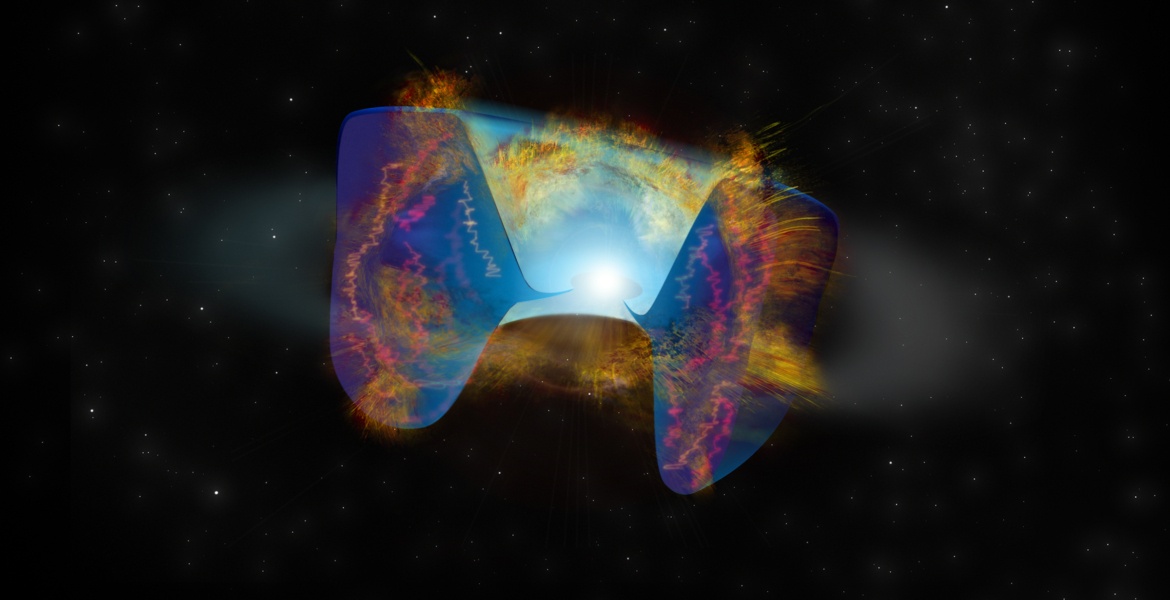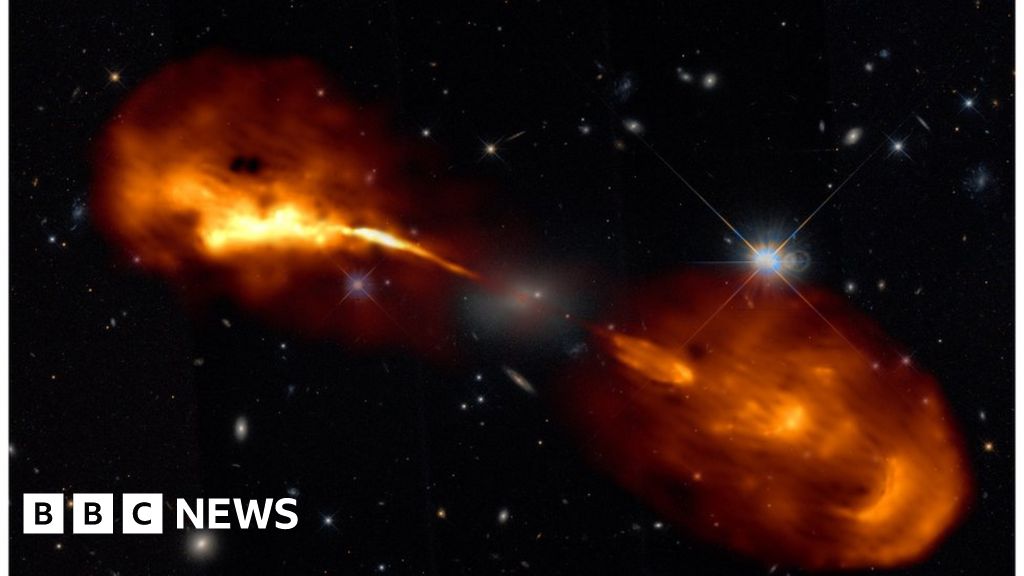
Astronomers baffled by bizarre 'zombie star' that shouldn't exist
A newly discovered neutron star is behaving so strangely that it may alter our understanding of the dense remains left behind when stellar objects die
Artist’s impression of ASKAP J1839-0756, a neutron star emitting beams of radio waves from its magnetic polesJames Josephides
A collapsed star around 13,000 light years away is so unusual that the researchers who have discovered it say it shouldn’t exist.
It was first detected in January 2024 by the ASKAP radio telescope in Western Australia and is likely to be a kind of pulsar that has never been seen before.
When supermassive stars reach the end of their lives and explode in a supernova, the remnants form a super-dense object called a neutron star. Pulsars are neutron stars that spin rapidly, emitting radio waves from their magnetic poles as they rotate. Most pulsars spin at speeds of more than one revolution per second and we receive a pulse at the same frequency, each time a radio beam points towards us.
But in recent years, astronomers have begun to find compact objects that emit pulses of radio waves at a much slower rate. This has baffled scientists, who had thought that radio wave flashes should cease when the rotation slows to more than a minute for each spin.





















